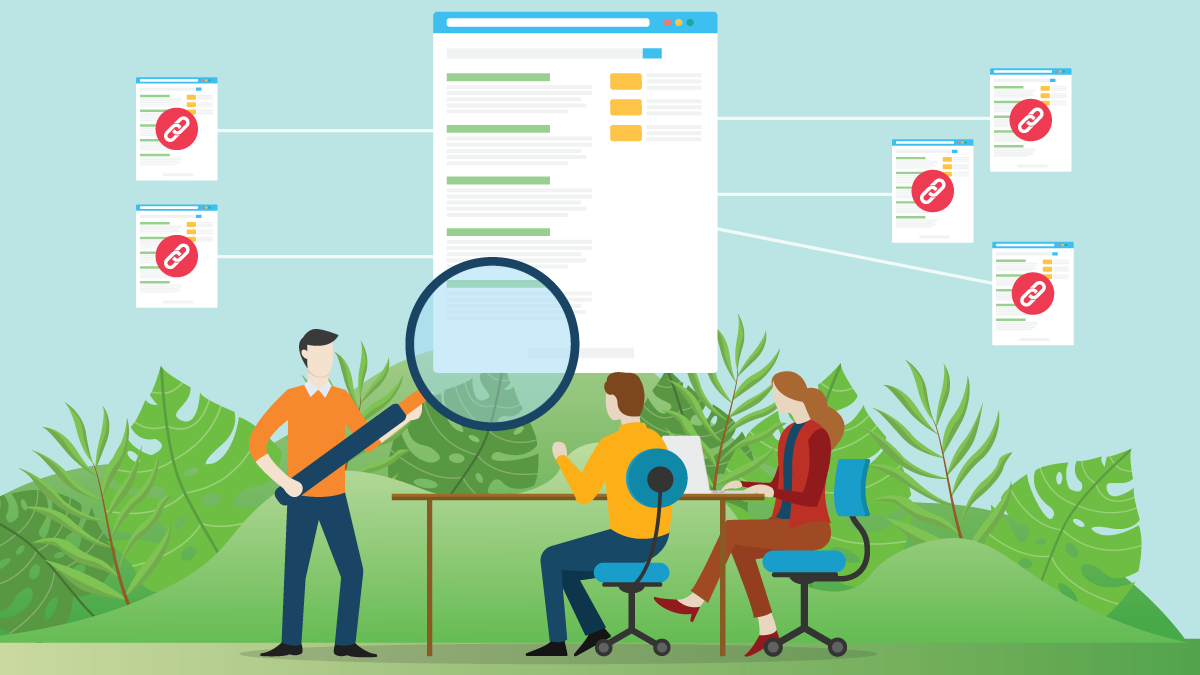Building backlinks is an essential component of SEO strategy. These links boost your website on the Search Engine Results Page (SERP) because they show Google that other sites deem your content worthy of a link. This encourages Google to perceive your site as holding expertise, authority, and trust, traits that get your pages ranked under the search engine’s E-A-T criteria.
However, while you need backlinks to rise in the SERP ranks, not all links are created equal. It’s essential to understand the different types of backlinks you can get, so you know which are worth pursuing and which may do more harm than good.
The Good
These types of backlinks are not the best, but they can still be beneficial to include in your SEO strategy and are worth incorporating into your page rank game plan:
1. Press Release Backlinks
The press release is an old marketing tool. Companies have long used it to introduce important news and get it out to the world. For instance, if you have a new product to announce, you might want to create a press release. In the newer world of online marketing, many have abused the press release for backlinks, putting out less-important news as a way of planting many links back to their site. Google has noticed.
To make the most of press releases as an SEO tool, use them sparingly. Your company should only put out a press release if you have truly noteworthy news to share. If it is genuinely exciting and valuable, news sites may pick up the story as well. Google considers news sites to be particularly authoritative so that you will get high-quality backlinks.
The content must be both newsworthy and well-written. Do some research on how to write a press release before starting. It should be clear, concise, and visually pleasing. Be sure to include a compelling header, your logo and brand, and a boilerplate including contact information at the end.
2. Acknowledgement Backlinks
This is a solid, worthwhile type of link to get. When you have a connection to or relationship with another site, ask them to add a link back to your pages. For instance, if you’re sponsoring an event, you should get a link on the event page. This kind of link doesn’t provide a lot of detail about your site, but it impacts SERP rank.
The Great
These types of backlinks are the best of the best. Spend more of your time going after this quality, effective backlinks:
1. Editorial Backlinks
An editorial backlink is truly the gold standard of getting your website ranked higher. An editorial link occurs when another site—preferably one with high domain authority—references and links back to your site as a way of highlighting your company or contextualizing their own content. Basically, Google reads editorial backlinks as demonstrating that another website is vouching for yours. These links lead to your landing page or to specific product pages.
To garner more editorial backlinks, work on creating evergreen content. This content is always relevant and valuable, as opposed to content that’s trendy and viral. People will keep coming back to evergreen content for information, whereas trendy content has a much shorter lifespan.
2. “Do Follow” Backlinks
Backlinks can be either “do follow” or “no follow.” The latter is a command in the code that tells Google not to pay attention to a link when it decides how to rank your website. No follow links can still drive traffic to your site, but they won’t help with page rank. When you’re placing links, you should aim for more “do follow” links, as Google considers these in ranking your website.
3. Contextual Backlinks
Contextual backlinks aren’t so much as a type of link as a style of placement. Any link you seek to place should be contextual. This means it must make sense in the context of where you put it—for example, a link to hiking boots is at home in a blog post about the best hiking trails. A link to your grandmother’s chicken parmesan recipe is out of place in a post about pest extermination.
The anchor text should also be contextual. It must make sense and naturally show the reader where the link is taking them, rather than feeling shoe-horned into the content. Above all else, you want to avoid a situation in which a reader clicks on your link and is surprised by where it leads them.
The Ugly
Avoid these ‘ugly’ links, for which Google may even penalize your site:
1. Paid Backlinks
Paying for a backlink may seem like a fair deal, but Google considers it a violation of its guidelines. Because Google uses these links to measure the quality of your site, paying for links that are not considered organically “earned” is a way of tricking its formula. If you pay for a link, it says nothing about your website or product’s quality. Google needs natural links to determine quality, trustworthiness, and authority.
2. Unauthoritative Directory Links
While some directories are authoritative, like those on a local news outlet’s page, for example, many directory links are listed on sites that provide minimal information for readers. A directory is kind of like the yellow pages—you might seek one out to find out what restaurants are open in your town, but it’s little more than a list. Avoid getting links on any directory you can find, especially those that are not local. Be selective and choose local directories for actual SEO benefits.
Know Your Links
Backlinking is a powerful strategy for working your way up the Google SERP, but it can backfire if you’re not selective. Know your links and understand which are good, which are great, and which are best avoided. By taking the time to get the best links, you’ll see real results.

